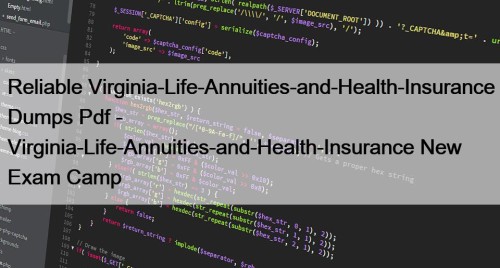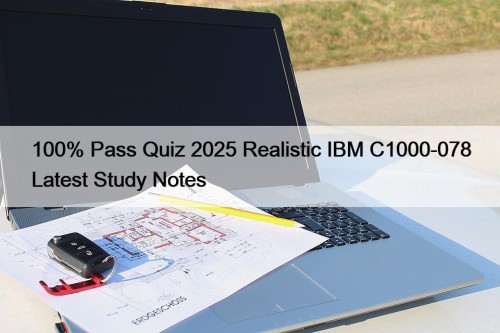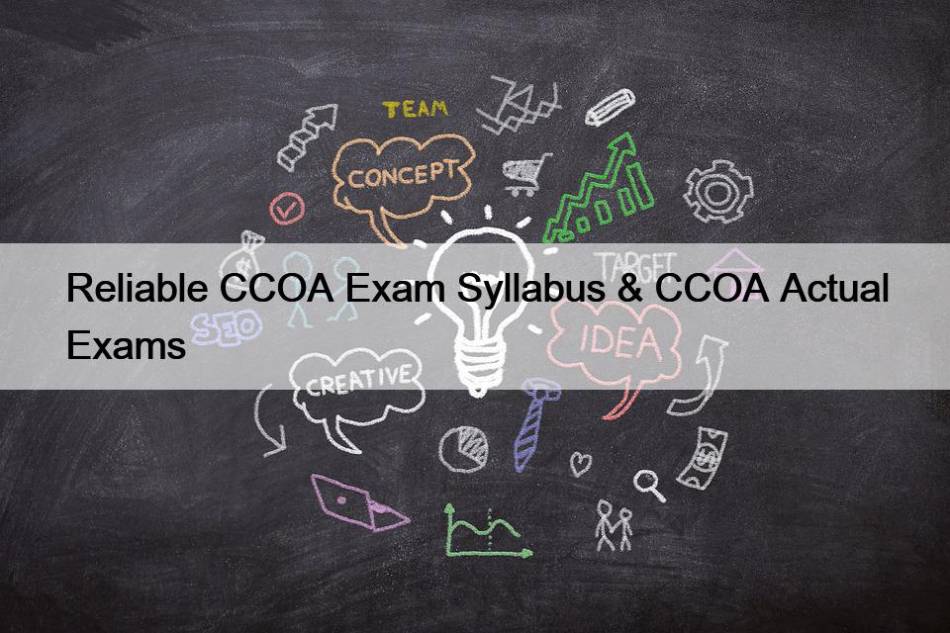Most Popular
 Reliable Virginia-Life-Annuities-and-Health-Insurance Dumps Pdf - Virginia-Life-Annuities-and-Health-Insurance New Exam Camp
Reliable Virginia-Life-Annuities-and-Health-Insurance Dumps Pdf - Virginia-Life-Annuities-and-Health-Insurance New Exam Camp
If you feel that you always suffer from procrastination and ...
 100% Pass Quiz 2025 Realistic IBM C1000-078 Latest Study Notes
100% Pass Quiz 2025 Realistic IBM C1000-078 Latest Study Notes
We know that you have strong desire for success in ...
![Use HP HPE6-A78 Exam Questions [2025]-Forget About Failure](http://www.stuffdirectory.com/thumbnails/6922599.jpg) Use HP HPE6-A78 Exam Questions [2025]-Forget About Failure
Use HP HPE6-A78 Exam Questions [2025]-Forget About Failure
What's more, part of that PrepAwayPDF HPE6-A78 dumps now are ...



Reliable CCOA Exam Syllabus & CCOA Actual Exams

Test4Cram ISACA Certified Cybersecurity Operations Analyst (CCOA) practice material can be accessed instantly after purchase, so you won't have to face any excessive issues for preparation of your desired CCOA certification exam. The CCOA Exam Dumps of Test4Cram has been made after seeking advice from many professionals. Our objective is to provide you with the best learning material to clear the ISACA Certified Cybersecurity Operations Analyst (CCOA) exam.
ISACA CCOA Exam Syllabus Topics:
| Topic | Details |
|---|---|
| Topic 1 |
|
| Topic 2 |
|
| Topic 3 |
|
| Topic 4 |
|
| Topic 5 |
|
>> Reliable CCOA Exam Syllabus <<
CCOA Actual Exams | CCOA Latest Questions
Taking practice tests is particularly helpful for those who have exam anxiety. Our practice tests are user-friendly and customizable. Windows support the desktop practice test software. Our web-based practice test is compatible with all browsers and operating systems. The web-based ISACA Certified Cybersecurity Operations Analyst (CCOA) practice test is similar to the desktop-based exam and can be taken on any browser without needing to download separate software.
ISACA Certified Cybersecurity Operations Analyst Sample Questions (Q85-Q90):
NEW QUESTION # 85
In which phase of the Cyber Kill Chain" would a red team run a network and port scan with Nmap?
- A. Delivery
- B. Reconnaissance
- C. Exploitation
- D. Weaponization
Answer: B
Explanation:
During theReconnaissancephase of theCyber Kill Chain, attackers gather information about the target system:
* Purpose:Identify network topology, open ports, services, and potential vulnerabilities.
* Tools:Nmap is commonly used for network and port scanning during this phase.
* Data Collection:Results provide insights into exploitable entry points or weak configurations.
* Red Team Activities:Typically include passive and active scanning to understand the network landscape.
Incorrect Options:
* A. Exploitation:Occurs after vulnerabilities are identified.
* B. Delivery:The stage where the attacker delivers a payload to the target.
* D. Weaponization:Involves crafting malicious payloads, not scanning the network.
Exact Extract from CCOA Official Review Manual, 1st Edition:
Refer to Chapter 8, Section "Cyber Kill Chain," Subsection "Reconnaissance Phase" - Nmap is commonly used to identify potential vulnerabilities during reconnaissance.
NEW QUESTION # 86
Which of the following controls would BEST prevent an attacker from accessing sensitive data from files or disk images that have been obtained either physically or via the network?
- A. Data loss prevention (DLP)
- B. Next generation antivirus
- C. Encryption of data at rest
- D. Endpoint detection and response (EOR)
Answer: C
Explanation:
Encryption of data at restis the best control to protectsensitive data from unauthorized access, even if physical or network access to the disk or file is obtained.
* Protection:Data remains unreadable without the proper encryption keys.
* Scenarios:Protects data from theft due to lost devices or compromised servers.
* Compliance:Often mandated by regulations (e.g., GDPR, HIPAA).
Incorrect Options:
* A. Next-generation antivirus:Detects malware, not data protection.
* B. Data loss prevention (DLP):Prevents data exfiltration but does not protect data at rest.
* C. Endpoint detection and response (EDR):Monitors suspicious activity but does not secure stored data.
Exact Extract from CCOA Official Review Manual, 1st Edition:
Refer to Chapter 6, Section "Data Security Strategies," Subsection "Encryption Techniques" - Encryption of data at rest is essential for protecting sensitive information.
NEW QUESTION # 87
Your enterprise has received an alert bulletin fromnational authorities that the network has beencompromised at approximately 11:00 PM (Absolute) onAugust 19, 2024. The alert is located in the alerts folderwith filename, alert_33.pdf.
Use the IOCs to find the compromised host. Enter thehost name identified in the keyword agent.name fieldbelow.
Answer:
Explanation:
See the solution in Explanation.
Explanation:
To identify the compromised host using thekeyword agent.name, follow these steps:
Step 1: Access the Alert Bulletin
* Navigate to thealerts folderon your system.
* Locate the alert file:
alert_33.pdf
* Open the file with a PDF reader and review its contents.
Key Information to Extract:
* Indicators of Compromise (IOCs) provided in the bulletin:
* File hashes
* IP addresses
* Hostnames
* Keywords related to the compromise
Step 2: Log into SIEM or Log Management System
* Access your organization'sSIEMor centralized log system.
* Make sure you have the appropriate permissions to view log data.
Step 3: Set Up Your Search
* Time Filter:
* Set the time window toAugust 19, 2024, around11:00 PM (Absolute).
* Keyword Filter:
* Use the keywordagent.nameto search for host information.
* IOC Correlation:
* Incorporate IOCs from thealert_33.pdffile (e.g., IP addresses, hash values).
Example SIEM Query:
index=host_logs
| search "agent.name" AND (IOC_from_alert OR "2024-08-19T23:00:00")
| table _time, agent.name, host.name, ip_address, alert_id
Step 4: Analyze the Results
* Review the output for any host names that appear unusual or match the IOCs from the alert bulletin.
* Focus on:
* Hostnames that appeared at 11:00 PM
* Correlation with IOC data(hash, IP, filename)
Example Output:
_time agent.name host.name ip_address alert_id
2024-08-19T23:01 CompromisedAgent COMP-SERVER-01 192.168.1.101 alert_33 Step 5: Verify the Host
* Cross-check the host name identified in the logs with the information fromalert_33.pdf.
* Ensure the host name corresponds to the malicious activity noted.
The host name identified in the keyword agent.name field is: COMP-SERVER-01 Step 6: Mitigation and Response
* Isolate the Compromised Host:
* Remove the affected system from the network to prevent lateral movement.
* Conduct Forensic Analysis:
* Inspect system processes, logs, and network activity.
* Patch and Update:
* Apply security updates and patches.
* Threat Hunting:
* Look for signs of compromise in other systems using the same IOCs.
Step 7: Document and Report
* Create a detailed incident report:
* Date and Time:August 19, 2024, at 11:00 PM
* Compromised Host Name:COMP-SERVER-01
* Associated IOCs:(as per alert_33.pdf)
By following these steps, you successfully identify the compromised host and take initial steps to contain and investigate the incident. Let me know if you need further assistance!
NEW QUESTION # 88
An organization has received complaints from a number of its customers that their data has been breached.
However, after an investigation, the organization cannot detect any indicators of compromise. The breach was MOST likely due to which type of attack?
- A. Supply chain attack
- B. injection attack
- C. Man-in the-middle attack
- D. Zero-day attack
Answer: A
Explanation:
Asupply chain attackoccurs when a threat actor compromises athird-party vendoror partner that an organization relies on. The attack is then propagated to the organization through trusted connections or software updates.
* Reason for Lack of Indicators of Compromise (IoCs):
* The attack often occursupstream(at a vendor), so the compromised organization may not detect any direct signs of breach.
* Trusted Components:Malicious code or backdoors may be embedded intrusted software updatesor services.
* Real-World Example:TheSolarWinds breach, where attackers compromised the software build pipeline, affecting numerous organizations without direct IoCs on their systems.
* Why Not the Other Options:
* B. Zero-day attack:Typically leaves some traces or unusual behavior.
* C. injection attack:Usually detectable through web application monitoring.
* D. Man-in-the-middle attack:Often leaves traces in network logs.
CCOA Official Review Manual, 1st Edition References:
* Chapter 6: Advanced Threats and Attack Techniques:Discusses the impact of supply chain attacks.
* Chapter 9: Incident Response Planning:Covers the challenges of detecting supply chain compromises.
NEW QUESTION # 89
The user of the Accounting workstation reported thattheir calculator repeatedly opens without their input.
The following credentials are used for thisquestion.
Username:Accounting
Password:1x-4cc0unt1NG-x1
Using the provided credentials, SSH to the Accountingworkstation and generate a SHA256 checksum of the filethat triggered RuleName Suspicious PowerShell usingeither certutil or Get-FileHash of the file causing theissue. Copy the hash and paste it below.
Answer:
Explanation:
See the solution in Explanation.
Explanation:
To generate theSHA256 checksumof the file that triggeredRuleName: Suspicious PowerShellon the Accounting workstation, follow these detailed steps:
Step 1: Establish an SSH Connection
* Open a terminal on your system.
* Use the provided credentials to connect to theAccounting workstation:
ssh Accounting@<Accounting_PC_IP>
* Replace <Accounting_PC_IP> with the actual IP address of the workstation.
* Enter the password when prompted:
1x-4cc0unt1NG-x1
Step 2: Locate the Malicious File
* Navigate to the typical directory where suspicious scripts are stored:
cd C:UsersAccountingAppDataRoaming
* List the contents to identify the suspicious file:
dir
* Look for a file related toPowerShell(e.g., calc.ps1), as the issue involved thecalculator opening repeatedly.
Step 3: Verify the Malicious File
* To ensure it is the problematic file, check for recent modifications:
powershell
Get-ChildItem -Path "C:UsersAccountingAppDataRoaming" -Recurse | Where-Object { $_.LastWriteTime
-ge (Get-Date).AddDays(-1) }
* This will list files modified within the last 24 hours.
* Check file properties:
powershell
Get-Item "C:UsersAccountingAppDataRoamingcalc.ps1" | Format-List *
* Confirm it matches the file flagged byRuleName: Suspicious PowerShell.
Step 4: Generate the SHA256 Checksum
Method 1: Using PowerShell (Recommended)
* Run the following command to generate the hash:
powershell
Get-FileHash "C:UsersAccountingAppDataRoamingcalc.ps1" -Algorithm SHA256
* Output Example:
mathematica
Algorithm Hash Path
--------- ---- ----
SHA256 d2c7e4d9a4a8e9fbd43747ebf3fa8d9a4e1d3b8b8658c7c82e1dff9f5e3b2b4d C:
UsersAccountingAppDataRoamingcalc.ps1
Method 2: Using certutil (Alternative)
* Run the following command:
cmd
certutil -hashfile "C:UsersAccountingAppDataRoamingcalc.ps1" SHA256
* Example Output:
SHA256 hash of calc.ps1:
d2c7e4d9a4a8e9fbd43747ebf3fa8d9a4e1d3b8b8658c7c82e1dff9f5e3b2b4d
CertUtil: -hashfile command completed successfully.
Step 5: Copy and Paste the Hash
* Copy theSHA256 hashfrom the output and paste it as required.
Final Answer:
nginx
d2c7e4d9a4a8e9fbd43747ebf3fa8d9a4e1d3b8b8658c7c82e1dff9f5e3b2b4d
Step 6: Immediate Actions
* Terminate the Malicious Process:
powershell
Stop-Process -Name "powershell" -Force
* Delete the Malicious File:
powershell
Remove-Item "C:UsersAccountingAppDataRoamingcalc.ps1" -Force
* Disable Startup Entry:
* Check for any persistent scripts:
powershell
Get-ItemProperty -Path "HKCU:SoftwareMicrosoftWindowsCurrentVersionRun"
* Remove any entries related to calc.ps1.
Step 7: Document the Incident
* Record the following:
* Filename:calc.ps1
* File Path:C:UsersAccountingAppDataRoaming
* SHA256 Hash:d2c7e4d9a4a8e9fbd43747ebf3fa8d9a4e1d3b8b8658c7c82e1dff9f5e3b2b4d
* Date of Detection:(Today's date)
NEW QUESTION # 90
......
The ISACA CCOA PDF dumps format is the most simple and easy version, specially designed by the Test4Cram to provide value to its consumers. It is also compatible with all smart devices. Thus it is portable, which will help you practice the ISACA CCOA Exam without the barrier of time and place.
CCOA Actual Exams: https://www.test4cram.com/CCOA_real-exam-dumps.html
- CCOA Valid Practice Materials 🏸 CCOA Latest Exam Registration 📳 CCOA Exam Cram Questions 🥿 Download ⇛ CCOA ⇚ for free by simply searching on ➠ www.examcollectionpass.com 🠰 🏪CCOA Reliable Exam Labs
- Instantly Crack ISACA CCOA Exam with This Foolproof Method 🍀 Enter ✔ www.pdfvce.com ️✔️ and search for [ CCOA ] to download for free ☔CCOA Reliable Exam Labs
- Free CCOA Dumps 🥕 CCOA Exam Cram Questions 📕 Free CCOA Dumps 🐳 Search for ⇛ CCOA ⇚ and download it for free on 「 www.passcollection.com 」 website 🎈CCOA Reliable Exam Labs
- Updated And Free ISACA CCOA PDF Dumps Are Hassle-Free Preparation With Pdfvce 🍛 Search on ➡ www.pdfvce.com ️⬅️ for ➡ CCOA ️⬅️ to obtain exam materials for free download 👫CCOA Valid Exam Tutorial
- CCOA Reliable Exam Labs 🤲 Certification CCOA Torrent 🧥 Question CCOA Explanations 🐫 Search for 「 CCOA 」 and download it for free on ➡ www.torrentvce.com ️⬅️ website 😼CCOA Test Cram Review
- CCOA Valid Exam Tutorial 🔁 CCOA Valid Exam Tutorial ⛄ CCOA Latest Test Sample 🦳 Immediately open ➥ www.pdfvce.com 🡄 and search for ▶ CCOA ◀ to obtain a free download 🥌CCOA Latest Real Test
- Updated And Free ISACA CCOA PDF Dumps Are Hassle-Free Preparation With www.prep4pass.com 🔖 Search for { CCOA } and download exam materials for free through ➽ www.prep4pass.com 🢪 🥃CCOA Reliable Exam Labs
- Free PDF 2025 ISACA CCOA: ISACA Certified Cybersecurity Operations Analyst –High Pass-Rate Reliable Exam Syllabus 🍴 Open ▷ www.pdfvce.com ◁ enter ➠ CCOA 🠰 and obtain a free download 🎸CCOA Valid Exam Tutorial
- Latest CCOA Exam Dump Must Be a Great Beginning to Prepare for Your CCOA Exam 💉 Search for ▷ CCOA ◁ and download exam materials for free through ▶ www.exams4collection.com ◀ 🧎CCOA Test Cram Review
- CCOA Training Materials: ISACA Certified Cybersecurity Operations Analyst - CCOA Practice Test 🐗 Open ⇛ www.pdfvce.com ⇚ and search for “ CCOA ” to download exam materials for free 🧞Valid CCOA Torrent
- CCOA Latest Exam Registration 🚂 New CCOA Test Guide 🐞 CCOA Reliable Source 🦈 Open ▶ www.lead1pass.com ◀ enter “ CCOA ” and obtain a free download 🤖Free CCOA Dumps
- CCOA Exam Questions
- daeguru.com drgilberttoel.com nxtnerd.com learn.anantnaad.in medskillsmastery.trodad.xyz motionentrance.edu.np brilacademy.co.za staging.holmeslist.com.au bludragonuniverse.in www.shuoboonline.com
Tags: Reliable CCOA Exam Syllabus, CCOA Actual Exams, CCOA Latest Questions, CCOA Latest Exam Fee, CCOA Test Braindumps